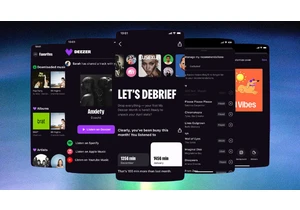Niantic, the augmented reality gaming platform best known for the hit Pokémon Go, announced a number of enhancements to its Lightship development platform that may help it compete with larger, cash-rich tech companies that will soon go full throttle into 3D spatial computing. At its developer conference in San Francisco on Tuesday, Niantic launched its “Lightship Virtual Positioning System,” a virtual map of the Earth that allows game developers to anchor 3D graphics to places in the real world. For example, a developer might hide a (digital) prize near a well-known statue as part of a scavenger hunt game. With its foundational “map of the world” and a central destination to discover AR content, Niantic continues to evolve into an alternative platform on which developers can create experiences outside the AR/VR ecosystems of Apple, Meta, and Google. This may offer some advantages. Niantic, after all, has the most real experience in developing and fielding AR apps, including one that was a massive hit (Pokémon Go) and introduced many, many people to the concept of augmented reality in the first place. The company has been working on its virtual map for some years. Niantic says its map already contains more than 30,000 public locations, with higher numbers of locations concentrated in San Francisco, London, Tokyo, Los Angeles, New York City, and Seattle. Developers can also add their own locations to the map to support their AR apps and experiences. The concept of real-world AR has become the centerpiece of Niantic’s take on the metaverse, but it’s far from the only platform in town. Google, under whose wing Niantic originally developed its technology, recently released its own AR map of the world, which it built using the terabytes of photos it has collected for its Google Street View function. Niantic and its competitors in AR are creating such maps in preparation for a major shift in personal technology toward spatial computing. “About once a decade for the last 70 years, a new computing platform arrives and changes the way we work, play, communicate with each other, and lead our lives,” Niantic founder John Nanke said of AR during his keynote Tuesday in San Francisco. “We’re now at the beginning of another one of those shifts, and it could be the most consequential one yet. This transition will truly blend the real and the digital world.” That shift, however, is at least partly dependent on the development of a new generation of wearable hardware. Right now, real-world-anchored AR content must be viewed through the screen of a smartphone camera. In the future, developers hope to deliver those virtual experiences through AR glasses, which Snap has already built (for developers only) and that Apple, Google, and Meta are all reportedly building. The companies that make the AR glasses will almost certainly launch their own AR app stores in which they will offer their AR experiences and those of third-party developers (which may have to pay a fee to be there). Niantic, for its part, announced on Tuesday a new metaverse destination called “Campfire” where users can discover the AR games and apps Lightship developers create. But Campfire is a bit more ambitious than an app store. There’s also a social element that will let users find gaming buddies and perhaps go on AR adventures together in the real world. “We think of it as the homepage of the real-world metaverse,” Hanke said, “a place where players can discover other players in their local area, message one another and share content, organize their own events and meetups, and foster the kinds of real-world social connections that have always been at the core of what Niantic does.”
Login to add comment
Other posts in this group

Google will confront an

Instagram has begun testing AI-powered technology designed to proactively identify accounts it suspects belong to teens—even if the user has listed an adult birthdate—and place them under special

Behind the curtain of generative AI breakthroughs and GPU hype, a quieter transformation is taking place. Data center architecture and its prowess have become a fierce battleground as AI models ex

Amid the video podcast boom, Netflix is making its own move into the space.

If real Easter eggs aren’t your thing this weekend, you may find hunting for digital ones more enjoyable. And there are some cool ones to find at your fingertips, provided you have an iPhone or Ma

With music streaming, users have gotten used to being at the mercy of algorithms. But French music streamer Deezer is making it easier for its subscribers to make the algorithm work for them.

Trying to get from point A to point B? If only it were that simple! With any manner of travel these days, you’ve got options: planes, trains, buses, ferries, and beyond. And finding the best
